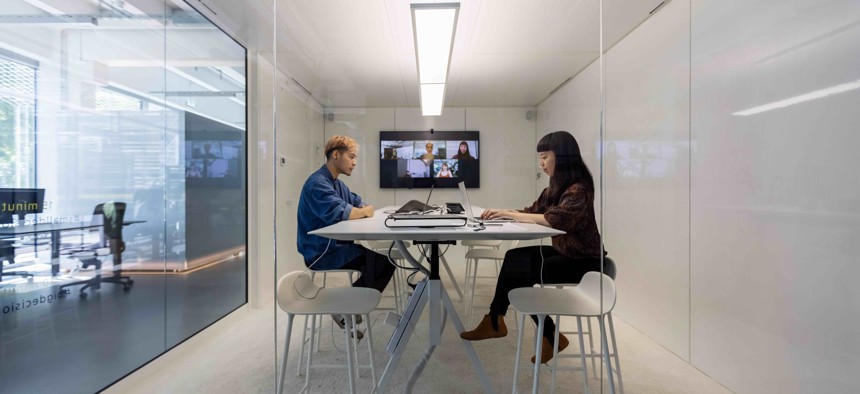Easing the Transition to a Long-term Hybrid Workplace

GettyImages/ Luis Alvarez
A new Gallup report based on thousands of survey responses over the past two years offers insights into evolving preferences and practices with remote work.
As employers and workers prepare for what the new hybrid office environment will look like, a new report from Gallup, the global analytics and advice firm, recommends asking five questions that will help with the transition:
Where are employees working now, and where will they work in the future?
About half the U.S. full-time workforce—roughly 60 million people—say their job can be done from home, at least part-time. While most employees who can work remotely continue to work from home at least part-time, 42% surveyed said they had a hybrid schedule while 39% worked exclusively from home, the report, published in mid-March, shows.
However, when asked where they plan to work long-term, about 53% expect a hybrid arrangement and 24% expect to work exclusively remotely.
What happens if organizations do not support remote flexibility?
Leaders and managers prefer hybrid work and tend to have hesitations about employees being fully remote, generally raising concerns that team culture and performance could suffer, according to Gallup. However, when employees work from a location that is not aligned with their preferences, that can contribute to its own set of problems. These include:
- Lower engagement
- Lower wellbeing
- Higher intent to leave
- Higher levels of burnout
About 54% of employees surveyed working solely from home said they would likely look for another job if their employer stopped offering remote work options and 38% of hybrid workers said the same, the report shows.
Why is hybrid work preferred?
The top reasons, according to Gallup, that workers prefer a hybrid work environment are:
- Avoiding commutes
- Better overall wellbeing
- Flexibility to balance other obligations
- Still have the option to work in-person with co-workers
- Allows for feeling both more productive and still connected to organization
These preferences align with other Gallup research that shows gaining work-life balance and improved personal wellbeing are the top contributing factors to employees' changing jobs.
What will the future workweek look like?
Four in 10 employees surveyed say they want to be in the office two to three days per week, while another three in 10 employees would prefer spending around one or two days in the office each week, according to the report. However, there is no consensus among employees on which scheduling policies should define hybrid work in the future.
How can we make hybrid work more productive and engaging?
The new hybrid workplace needs to provide three things to make it more productive and engaging, according to Gallup. Those are:
- Productivity: Getting the work done efficiently and effectively
- Flexibility: Allowing personalization so people can thrive at work and home
- Connectivity: Encouraging partnerships that support teamwork and organizational culture
Gallup based its report on responses from 140,000 U.S. employees surveyed since the start of the pandemic.
For more about the report click here.
Andre Claudio is an assistant editor at Route Fifty.
NEXT STORY: Amazon Workers on Staten Island Vote to Join First Union





